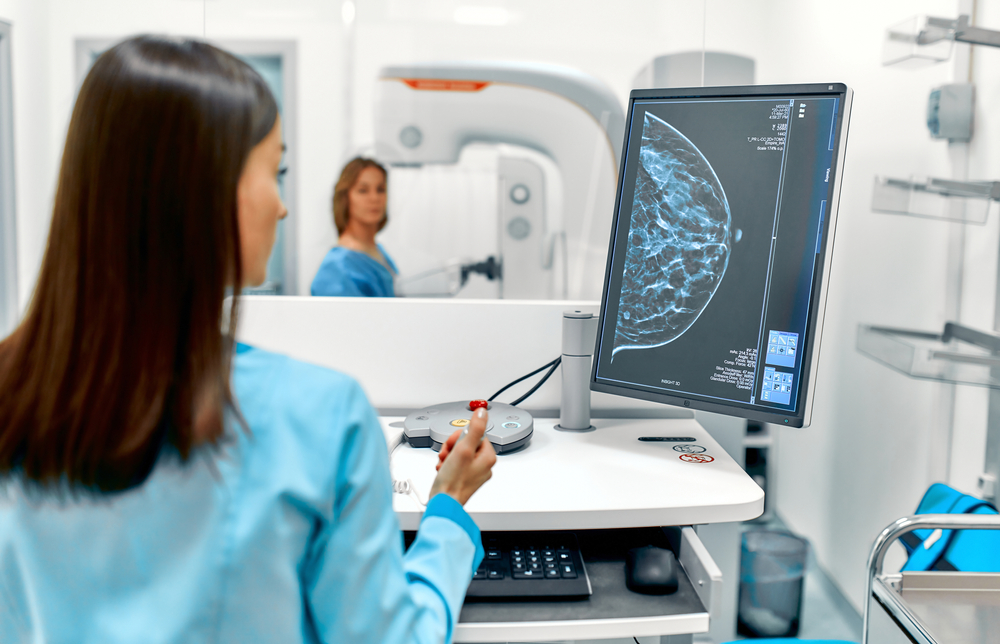
Adenosis
The lobules that produce milk in the breast grow in a disease known as adenosis, and there may be an increase in the number of glands. It is not malignant because this disease is benign. Screening mammography, an X-ray examination that looks for worrisome breast tissue, or a breast self-exam may reveal it.
Adenosis may appear as a lump or calcification (minor white calcium deposits) on mammography, both of which are common symptoms of breast cancer.
Adenosis itself is not malignant, although some evidence to the contrary suggests that it may raise the chance of breast cancer, particularly the sclerosing variety that results in fibrous tissue that resembles scar tissue.
Alarming factors:
Adenosis has no known specific aetiology as of yet. Adenosis lumps, however, may be brought on by typical hormonal effects and variations, as well as specific gene alterations, according to a study published in 2009.
The causes of adenosis risk factors are still unknown. Generalized risk factors for benign breast diseases include:
- Being a woman
- Being overweight
- Consuming alcohol
- Beginning your menstruation before the age of 12
- Utilization of hormone treatment after menopause
- Birth control pill use
- Having no children or having children for the first time after the age of 35
- Physical inactivity
However, these do not ensure that you will develop adenosis or perhaps another benign breast disease, however, they do raise your risk. Similarly, you might be diagnosed even though you do not have any (or many) of these risk factors.
Symptoms:
The majority of women won't have any symptoms, and it's frequently first discovered during regular mammography (breast x-ray) or after examinations for another breast issue.
On occasion, some people could detect a little bump. Some people may have breast discomfort, although this is quite uncommon. When there is pain, it often just affects one place and lasts for a longer period. Some women discover that the discomfort worsens the day before their period.
Diagnosis:
They could be big large enough to be detected as a breast lump if several enlarged lobules are near one another. A breast exam may not be sufficient in this situation to determine if the lump is adenosis or something else such as breast cancer.
Both breast tumors and adenosis (including sclerosing adenosis) can develop calcifications (mineral deposits). It might be challenging to distinguish between these disorders since these can appear on mammograms.
A breast biopsy is typically required due to these concerns to determine whether the breast alteration is brought on by adenosis or cancer. Small samples of breast tissue are taken during a biopsy and examined under a microscope.
Treatment:
Adenosis does not require therapy because it is not cancer. Wearing a bra with adequate support might be beneficial if your breasts start to hurt. Decreased caffeine consumption may also help some women's symptoms go better.
If neither of these methods helps to relieve your breast soreness, speak with your healthcare practitioner about other pain-management options.
Conclusion:
A noncancerous disorder known as adenosis of the breast causes the lobules to enlarge and possess more glands than usual. This may result in the formation of lumps and discomfort in the breasts. Adenosis lumps could be spotted on mammography, and to rule out breast cancer, a tissue sample may need to be biopsied. No surgical procedure is required if it is determined that the lumps are adenosis.
Your thoughts may quickly turn to breast cancer when you discover a lump (or any alteration) in your breast. While you wait to visit your healthcare practitioner, learning further about adenosis as well as other benign disorders that might resemble breast cancer will help you gain a better idea of the options and calm any irrational anxieties you may have.






